The WRMarketplace is created exclusively for AALU members by experts at Greenberg Traurig and the AALU staff, led by Jonathan M. Forster, Steven B. Lapidus, Martin Kalb, Richard A. Sirus, and Rebecca S. Manicone. WR Marketplace #18-04 was written by Shareholders Marvin Kirsner and Rick Melnick.
The AALU WR Newswire and WR Marketplace are published by the AALU as part of the Essential Wisdom Series, the trusted source of actionable technical and marketplace knowledge for AALU members—the nation’s most advanced life insurance professionals.
Friday, 26 January 2018 WRM#18-04
TOPIC: Decoding Tax Reform: Pass-Through Entities Part 1 – The 20% Deduction for Qualified Business Income.
MARKET TREND: The recently-enacted tax reform legislation provides a significant tax break for businesses operated through pass-through entities or as a sole proprietorship but requires careful planning to navigate the restrictions and requirements.
SYNOPSIS: The new tax reform legislation enacts a 20% income tax deduction based on the “qualified business income” of an owner of a business structured as a sole proprietorship or pass-through entity. If the deduction can be fully utilized, it will result in a marginal rate on qualified business income of 28% for a typical taxpayer and 29.6% for those in the top tax bracket. Yet, the deduction is subject to numerous requirements and limitations, which will likely limit the maximum benefit for many pass-through business owners. This Part 1 explores the various deduction requirements and limitations, as well as some potential planning considerations. Part 2 will discuss the issues for pass-through business owners who are considering conversions to C corporations.
TAKE-AWAYS: Although some business owners will squarely fit within the parameters of the new deduction for pass-through business income, many will not be able to take full advantage, because of the type of business, the amount of W-2 wages paid by the business, the tangible depreciable assets owned by the business, and in some cases, the overall taxable income of the business owner.
The recently-passed tax reform legislation rewrites several important provisions of the Internal Revenue Code (“Code”).
The enactment of Code §199A may be the most notable for owners of businesses structured as sole proprietorships or pass-through entities (i.e., partnerships, multiple-member LLCs or subchapter S corporations), as it provides owners with up to a 20% income tax deduction based on the owner’s share of the business’s “qualified business income” (“199A deduction”). The new deduction results in a 28% marginal rate on qualified business income of a typical taxpayer and 29.6% for those in the top tax bracket. Yet, numerous requirements and limitations apply to the deduction, likely limiting the maximum benefit for many pass-through business owners.
ELIGIBILITY
Not a Specified Service Trade or Business. Generally, any business other than a “specified service trade or business”(“SSTB”) is eligible for the 199A deduction.ASSTB is any trade or business:
- Involving the performance of services in the fields of health, law, accounting, actual science, performing arts, consulting, athletics, financial services, brokerage services,
- Where the principal asset of the trade or business is the reputation or skill of one or more of its employees or owners or
- Involving the performance of services that consist of investing and investment management or trading or dealing in securities, partnership interests, or commodities.
- PracticeNote: While architecture and engineering firms are eligible for the 199A deduction, most professional service businesses, such as law, accounting, medical and financial service firms, are not eligible.
Exception – SSTB Owners Below Certain Taxable Income Threshold. An SSTB owner may be able to claim the full 199A deduction if his or her total taxable income from all sources (not just the business) does not exceed $157,500 (single filer) or $315,000 (married, joint filer), as annually indexed for inflation.
Example: Tom owns his own law firm, and his wife, Jane, owns her own accounting firm. Both firms are SSTBs. Tom has $150,000 in taxable income from his law firm, Jane has $300,000 in taxable income from her accounting business, and they both have $30,000 in allowable personal deductions. As their total taxable income equals $420,000 (($150,000+$300,000) – $30,000), they exceed the $315,000 joint filer threshold for the SSTB exception. If Tom and Jane filed their returns as married filing separately, however, Tom could benefit from the 199A deduction because his total taxable income would be below the $157,500 single filer threshold.
- Practice Note: As married couples filing separate returns could incur additional tax liabilities in other areas, spouses with income from SSTBs must confer with their tax advisor to decide whether it would be otherwise advantageous to file separate returns.
For SSTB owners with total taxable income in excess of the initial thresholds, a partial 199A deduction may be available until it phases out at total taxable income of $207,500 (single filer) and $415,000 (married, joint filers).
The 20% deduction is reduced 1% for each $2,500 in taxable income over $157,500 for single filers or $5,000 in taxable income over $315,000 for joint filers.
Employees Not Eligible. Income earned as an employee is not eligible for the 199A deduction. The income must be earned as a sole proprietor of a business or as an owner of a pass-through entity that operates a business. Income received by individuals for providing services as independent contractors, however, could be eligible. For example, an individual employee of an engineering firm that receives an annual salary of $150,000 is not eligible for the 199A deduction. However, if that same individual became an independent contractor, providing services for his firm, then he or she technically would be eligible for the deduction.
- Practice Note: As with the suggestions that married spouses file separately, the suggestions that an employee become an independent contractor to take advantage of the 199A deduction might raise several problems. For example, the former employee may no longer be eligible for health or other benefits from the “former” employer and would be responsible for paying self-employment tax, potentially vitiating any benefit from the 199A deduction. Employers also should be concerned about converting an employee to an “independent contractor” because if the IRS successfully disputed the change in classification, the employer would be liable for unpaid withholding taxes and the employer’s share of FICA taxes, plus interest and penalties. Consequently, both employees and employers should proceed cautiously in reclassifying an employee as an independent contractor solely to take advantage of the 199A deduction.
QUALIFIED BUSINESS INCOME – WHAT IS IT?
The 199A deduction applies only to the “qualified business income” (“QBI”) of an eligible business, meaning any business income that is not classified as:
- Short or long-term capital gain or loss,
- Investment income, including income from dividends, interest, annuities, or trading commodities and currencies (but interest income that is allocable to the taxpayer’s trade or business will not be excluded from qualified business income),
- Foreign source income that is not “effectively connected” with a US trade or business,
- Certain “Subpart F” income (income from foreign sources), or
- Qualified REIT dividends, qualified cooperative dividends, or qualified publiclytraded partnership income.
Example: Fred is the sole owner of a XYZ, a qualifying business for purposes of the 199A deduction. The taxable income from XYZ is $500,000, which includes $100,000 in long term capital gain from the sale of the leasehold on the business’s leased office space. The QBI eligible for the 199A deduction is $400,000 ($500,000 total income less the $100,000 capital gain). Assuming availability of the full 20% deduction, Fred could deduct $80,000, paying tax at ordinary rates on $320,000 of QBI and tax at capital gain rates on $100,000.
Reductions for Reasonable Compensation. For S corporations, the amount of QBI eligible for the 199A deduction is reduced by any amount paid by an S corporation to a shareholder if that amount is treated as reasonable compensation. For partnerships and LLCs taxed as partnerships, the QBI of a partner is reduced by so-called “guaranteed payments” for services (but not for capital), or, in certain cases, other amounts paid to that partner for services that are not undertaken in the partner’s capacity as a partner. A “guaranteed payment” is any payment that is a fixed amount and paid regardless of whether there are profits. This provision appears to exclude from QBI any amounts that are not based on a share of profits.
Example: Sharon is a 50% partner in ABC, a partnership that owns a software business. She receives $300,000 from ABC, including a $100,000 “guaranteed payment” for services. Only $200,000 of the business income from ABC is eligible for the 199A deduction ($300,000 – $100,000 guaranteed payment).
LIMITATIONS ON THE DEDUCTION – WHAT ARE THEY?
Taxable Income over Threshold. An important limitation applies for business owners with total taxable income (from allsources) in excess of the $157,500 (single filer) / $315,000 (joint filer) threshold who want to take full advantage of the 199A deduction. The deduction is limited to the greater of: (a) 50% of the W-2 wages paid by the business (“W-2 limit”) or (b) 25% of the W-2 wages plus 2.5% of the unadjusted basis of depreciable tangible capital assets that are owned by the business at the end of the taxable year (“depreciable asset limit”).
Example: Sam is a partner in FGE, a qualified business. His share of the business’s taxable income is $800,000, all of which is QBI. He performs no services for the business, so there is no reduction for reasonable compensation. The potential amount of the 199A deduction is $160,000 ($800,000 x 20%), but only if Sam meets either the W-2 wage or depreciable asset limits above. If Sam’s allocable share of the W-2 wages paid by FGE is $200,000, and his share of the tangible depreciable property is $1,000,000, his 199A deduction is limited to the greater of: (a) $100,000 (50% of W-2 wages); or (b) $50,000 (25% of W- 2 wages + 2.5% of depreciable assets). As a result, Sam can only deduct $100,000, rather than $160,000.
W-2 Limit. The only wages paid by a business that count towards the W-2 limit are those that are: (a) subject to wage withholding, elective deferrals, and deferred compensation, (b) paid by the business with respect to employment of its employees during the calendar year ending during the tax year of the taxpayer, and (c) for either (a) or (b), reported on a Form W-2 that has been filed within 60 days of the deadline for filing the W-2s.
The following amounts do notcount towards a business’s W-2 wages: (a) compensation paid on a Form 1099, (b) amounts paid to an employee leasing company for the employees’ services (because the W-2s are filed with respect to the employees of the employee leasing company and not employees of the business), and (c) amounts paid to a partner as compensation.
Example: Looking again at Sam, assume that FGE only engages independent contractors, not employees. Sam’s share of the 1099 compensation paid to those contractors is $200,000. Now, the amount that Sam can deduct is limited to $25,000 (2.5% of his share of the depreciable tangible assets), since there are no qualifying W-2 wages for use in calculating the W-2/depreciable asset limits.
Depreciable Asset Limit. The unadjusted basisin depreciable tangible depreciable assets is used for purposes of determining the 2.5% depreciable asset limit. This amount is essentially the purchase price of the asset, notreduced by depreciation deductions. The period for which an asset’s unadjusted basis can be used as part of this test is the greater of the useful life of the asset for depreciation purposes or 10 years. For example, if the business purchased equipment seven years ago for $100,000, and the equipment has been depreciated down to$0, the full $100,000 is still included in calculating the depreciable asset limit.
Only depreciable tangible personal or real property is used in determining the depreciable asset limit. Any intangible assets subject to amortization, such as goodwill, franchises, noncompetition agreements, leasehold interests, or leased equipment are excluded, as well as any land that is not depreciable (but not a building or other improvements to land).
- Practice Note: This particular restriction might become a factor in deciding whether a business should purchase or lease equipment. It also will factor into the allocation of the purchase price for a business. For example, the purchaser of a business might be better off having a greater portion of the purchase price allocated to the equipment than to goodwill.
Allocation of W-2 Wages and Assets’ Unadjusted Basis. To calculate the W-2/depreciable asset limits for multi-owner businesses: (a) W-2 wages are allocated to the owners based on their “allocable share” of wage expenses and (b) the unadjusted basis of depreciable tangible assets is allocated to owners in the same manner as their allocable share of depreciation. In certain partnership/operating agreements, the “allocable share” may differ from year to year based upon the allocation and distribution formulas in those agreements.
- Practice Note: The allocation of W-2 wages and unadjusted basis to owners of a partnership or LLC classified as a partnership may be complex, particularly for thoseentities which have investors that do not provide services to the business. In those cases, the owners should discuss special allocations of W-2 wages and/or depreciation with their accountants.
No W-2/Depreciable Asset Limits if Below Taxable Income Threshold. The W- 2/depreciable asset limits do not applyto business owners with total taxable income of less than $157,500 (single filer) or $315,000 (joint filers) (inflation-indexed).
Example: Susan, a single filer and a partner in NOP partnership, is allocated $100,000 of QBI, an additional $60,000 of guaranteed payments, and $15,000 in deductions, for total taxable income of $145,000. NOP pays no W-2 wages, and has no depreciable tangible capital assets. Regardless, Susan is still eligible to deduct $20,000 from her $100,000 of QBI because her total taxable income is below the $157,500 threshold for a single filer.
Limitation on Total Taxable Income. An owner might have net QBI from his business but also have losses from other businesses or the sale of assets. In such a case, the 199A deduction will be limited to the lesser of: (a) 20% of the QBI, after application of the W- 2/depreciable asset limits, or (b) the taxpayer’s entire taxable income for the year from all sources, less the sum of net capital gain and the aggregate amount of qualified cooperative dividends, times 20%.
Carryforward of Net Losses: If the net amount of QBI from all qualified businesses during the tax year is a loss, it is carried forward as a qualified business loss into the next tax year. Any 199A deduction of the taxpayer allowed in a subsequent year is reduced (but not below zero) by 20% of any such carryover qualified business loss.
PLANNING CONSIDERATIONS
Transfer of Real Estate to Separate Businesses. Some advisors are suggesting that owners of SSTBs might generate income eligible for some part of the 199A deduction by moving certain assets to a separate entity.
Example: Mary, a dermatologist, owns her own office condominium and medical equipment, free of any mortgages. Mary’s income from her medical practice is $600,000, but because her medical service business is a SSTB and she is over the taxable income phase-out, she cannot benefit from the 199A deduction on that income. Mary’s advisor suggests that she transfer her office condominium to a new S corporation controlled by her (“OfficeCo”), which would then lease the office to her medical practice. Arguably, OfficeCo would not be a SSTB, making Mary’s income from OfficeCo’s leasing business eligible for the 199A deduction. If OfficeCo can lease the office condominium for a fair market rental value of $100,000 per year, Mary may seek to claim this $100,000 as eligible for the 199A deduction, resulting in a deduction of $20,000 and a tax savings of $7,000 at her 35% marginal rate.
This approach might be viable if (a) the separate pass-through entity charges rent at fairmarket value, (b) all other requirements for the 199A deduction are satisfied, and (c) the IRS does not issue regulatory guidance prohibiting this type of planning. The benefits of splitting asset ownership in this manner, however, must be weighed against any potential income and real property transfer tax costs triggered by the transfer, as well as the added administrative costs, particularly as the 199A deduction is scheduled to expire in 2026. Further, this approach would not be viable in any state or locality that imposes a sales tax on real property leases (most notably Florida and Arizona), because the sales tax on the lease would offset the potential income tax savings (as explained in the next section).
Transfer of Equipment to Equipment Leasing Company. The owner of a SSTB also might be tempted to use a “spin-off” approach with equipment, but the potential income tax savings would be reduced or eliminated by the sales tax rules in many states.
Example: Mary the dermatologist transfers all her medical equipment to a new S corporation as a separate medical equipment leasing company (“EquipCo”). The fair market rental value for the equipment is $50,000 per year on a triple net basis, which might potentially result in a deduction of $10,000, saving her $3,500 in income tax. Most states, however, impose their sales tax on rental of equipment. If the applicable state sales tax rate is 7%, the $3,500 sales tax would completely offset the $3,500 income tax savings.
Accordingly, this approach may not be viable in states that impose a sales tax (45 states plus the District of Columbia), unless the state also exempts sales tax on equipment rentals to a related party (which many do not).
Two Separate Businesses under One Roof. What about two (or more) businesses conducted by the same owner, where one is a SSTB, but the other is a qualified trade or business? The law does not address the situation of multiple businesses under the same business entity, leaving it with the IRS to develop regulatory guidance.
Example: Assume Mary the dermatologist sells a complete line of skin care products in her medical office in addition to her medical practice. While the income from Mary’s medical services is still not eligible for the 20% deduction, Mary might take the position that the sale of skin care products is a qualified business generating QBI. To best support this position, Mary might consider separating her skin care line into a separate pass-through entity (“SkinCareCo”). This arrangement would require a lease or sublease of a portion of Mary’s office for SkinCareCo and an allocation of overhead expenses. Mary also must be reasonable in pricing her services and the pricing of the skin care products – if she deeply discounts the cost for her medical services for patients who purchase high priced skin care products, the IRS would likely reallocate income between the medical and skin care products businesses. Also, to satisfy the W-2/depreciable asset limits, SkinCareCo will need to pay $2 in W- 2 wages for each $1 of deduction or have significant capital equipment, requiring SkinCareCo to have paid employees and own its equipment.
Once again, this approach must be thoroughly vetted, as the additional costs and administration might not justify any potential income tax savings. Further IRS guidance also might disallow the 199A deduction in this situation or create additional requirements.
Transferring Interests to Children. Owners of eligible businesses might consider giving interests in a qualified business to their children. If the child’s income is below the $157,500/$315,000 taxable income thresholds, the W-2/depreciable asset limits will not apply to that income and the child will be able to claim the deduction even if the business is a SSTB, unless the IRS publishes guidance to the contrary. In any event, the transfer of the interest to the child would need to be a completed transfer, so business owners should carefully consider the overall impact of such transfers on the business’ ownership structure.
Conversion to a C Corporation. Pass-through business owners who cannot take advantage of the full 199A deduction may be tempted to consider a conversion to C corporation status to take advantage of the flat 21% corporate rate. Whether such a conversion makes sense given the numerous tax and practical issues that must be considered will be addressed in Part 2 of this WRMarketplace.
TAKE-AWAYS
Although some business owners will squarely fit within the parameters of the new deduction for pass-through business income, many will not be able to take full advantage, because of the type of business, the amount of W-2 wages paid by the business, the tangible depreciable assets owned by the business, and in some cases, the overall taxable income of the business owner.
DISCLAIMER
This information is intended solely for information and education and is not intended for use as legal or tax advice. Reference herein to any specific tax or other planning strategy, process, product or service does not constitute promotion, endorsement or recommendation by AALU. Persons should consult with their own legal or tax advisors for specific legal or tax advice.






